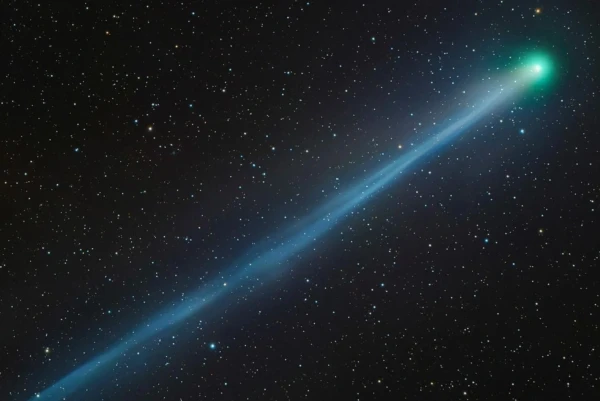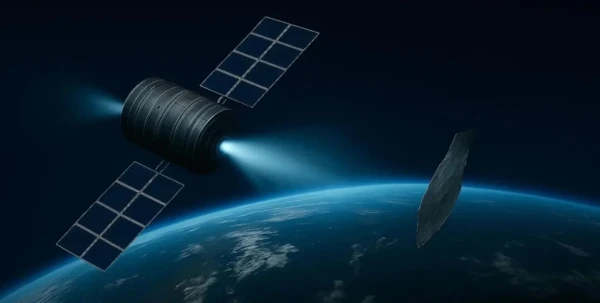
Comet C/2025 A6 (Lemmon) will approach Earth on October 21 and may be visible to the naked eye. However, it is better to use binoculars or a telescope, according to Focus.
Discovered in January 2025, comet C/2025 A6 (Lemmon) began to brighten in September as it approached the Sun. It may become so bright that there is a theoretical possibility it could be seen with the naked eye. However, it is more likely that binoculars or a telescope will be needed to observe one of the brightest comets of 2025. This comet will be at a distance of 90 million km from Earth on October 21, although C/2025 A6 (Lemmon) will also be visible before and after this date, according to Space.
As calculations by astronomers show, the previously discovered comet C/2025 A6 (Lemmon) will be at its closest distance to Earth (90 million km) for the first time in 1350 years on October 21. The brightness of the comet has increased from a magnitude of +21.5 at the time of its discovery to approximately 5.7. The smaller the magnitude, the brighter the object. Technically, such brightness is within the detection range of the human eye, which is about magnitude +6. This means that theoretically, if the sky is very dark, comet C/2025 A6 (Lemmon) could be seen with the naked eye. Nevertheless, astronomers recommend using binoculars or an amateur telescope for observing the comet.
Comets in the Solar System typically become more active and brighter several months or weeks before they reach their closest distance to the Sun. This also applies to comet C/2025 A6 (Lemmon). Solar heat evaporates the ice on the surface of the comet, leading to the formation of a coma (a gas envelope around the comet's nucleus) and a dust tail. The larger the coma becomes, the more sunlight it reflects. This means that the comet becomes brighter.
Comet C/2025 A6 (Lemmon), like the planets of the Solar System, is constantly shifting relative to the stars. In mid-October, it will pass near the star Chi Ursae Majoris in the constellation Ursa Major, just below the famous Big Dipper asterism, which consists of several stars. Then the comet will travel across the night sky towards the star Heart of the Dog in the constellation Canes Venatici.
Comet C/2025 A6 (Lemmon) will be in the heart of the constellation Boötes when it approaches Earth at its closest distance on October 21. After that, on October 26–27, it will be visible in the constellation Serpens.
From mid-October, the comet will be visible above the northeast horizon before sunrise, and on October 21, it will be low above the northwest horizon, but after sunset.












